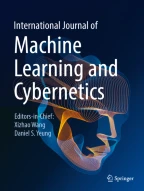Abstract
The community structure of networks provides a comprehensive insight into their organizational structures and functional behaviors. Label propagation is one of the most commonly adopted community detection algorithm with nearly linear time complexity. It ignores the difference between nodes when breaking ties, leading to poor stability and the occurrence of the monster community. We note that different community-oriented node roles impact the label propagation in different ways. In this paper, we propose a role-based label propagation algorithm (roLPA), in which the heuristics with regard to community-oriented node role were used. We have evaluated the proposed algorithm on both real and artificial networks. The result shows that roLPA outperforms other state-of-the-art community detection algorithms.
Similar content being viewed by others
Explore related subjects
Discover the latest articles, news and stories from top researchers in related subjects.References
Girvan M, Newman MEJ (2002) Community structure in social and biological networks. Proc Natl Acad Sci 99:7821–7826
Wu X, Liu Z (2008) How community structure influences epidemic spread in social networks. Phys A 387(2):623–630
Fortunato S (2010) Community detection in graphs. Phys Rep 486(3):75–174
Raghavan UN, Albert R, Kumara S (2007) Near linear time algorithm to detect community structures in large-scale networks. Phys Rev E 76:036106
Leung IX, Hui P, Lio P, Crowcroft J (2009) Towards real-time community detection in large networks. Phys Rev E 79.6:066107
Barber MJ, Clark JW (2009) Detecting network communities by propagating labels under constraints. Phys Rev E 80.2:026129
Tibély G, János K (2008) On the equivalence of the label propagation method of community detection and a Potts model approach. Phys A 387.19:4982–4984
Liu X, Tsuyoshi M (2010) Advanced modularity-specialized label propagation algorithm for detecting communities in networks. Phys A 389(7):1493–1500
Šubelj L, Bajec M (2011) Robust network community detection using balanced propagation. Eur Phys J B 81.3:353–362
Šubelj L, Bajec M (2011) Unfolding communities in large complex networks: combining defensive and offensive label propagation for core extraction. Phys Rev E 83.3:036103
Ugander J, Backstrom L (2013) Balanced label propagation for partitioning massive graphs. In: WSDM ACM
Subelj L, Bajec M (2011) Unfolding communities in large complex networks: combining defensive and offensive label propagation for core extraction. Phys Rev E 83:036103
Scripps J, Tan PN, Esfahanian AH (2007) Node roles and community structure in networks. In: Joint 9th WEBKDD
Chou BH, Suzuki E, Discovering community-oriented roles of nodes in a social network. DaWak (2010) 52–64
Wang Y, Di Z, Fan Y (2011) Identifying and characterizing nodes important to community structure using the spectrum of the graph. PLoS One 6(11):e27418
Zhu F, Wang W, Di Z, Fan Y (2014) Identifying and characterizing key nodes among communities based on electrical-circuit networks. PLoS One 9(6):e97021
Huang S, Lv T, Zhang X, Yang Y, Zheng W, Wen C (2014) Identifying node role in social network based on multiple indicators. PLoS One 9:e103733 8 )
Wasserman S, Faust K (1994) Social network analysis: methods and applications. Cambridge University Press, Cambridge
Shi L, Zhang J (2014) Community detection using robust label propagation algorithm. Sens Transducers 163(1):1726–5479
Zhao Y, Li S, Chen X (2012) Community detection using label propagation in entropic order. In: IEEE CIT
Burt RS (2004) Structural holes and good ideas. Am J Sociol 110.2:349–399
Danon L, Diaz-Guilera A, Duch J, Arenas A (2005) Comparing community structure identification. J Stat Mech 09:P09008
Zhang P (2015) A revisit to evaluating accuracy of community detection using the normalized mutual information. arXiv preprint 1501.03844
Zhang J, Chen T, Hu J (2015) On the relationship between Gaussian stochastic blockmodels and label propagation algorithms. J Stat Mech 3:P03009
Newman MEJ, Girvan M (2004) Finding and evaluating community structure in networks. Phys Rev E 69.2:026113
Fortunato S, Barthélemy M (2007) Resolution limit in community detection. Proc Natl Acad Sci 104.1:36–41
Rosvall M, Bergstrom CT (2008) Maps of random walks on complex networks reveal community structure. Proc Natl Acad Sci 105.4:1118–1123
Lancichinetti A, Fortunato S, Radicchi F (2008) Benchmark graphs for testing community detection algorithms. Phys Rev E 78.4:046110
Zachary WW (1977) An information flow model for conflict and fission in small groups. J Anthropol Res 33:452–473
Lusseau D, Schneider K, Boisseau OJ, Haase P, Slooten E, Dawson SM (2003) The bottlenose dolphin community of doubtful sound features a large proportion of long-lasting associations. Behav Ecol Sociobiol 54:396–405
Girvan M, Newman MEJ (2002) Proc Natl Acad Sci 99:7821–7826
Newman MEJ (2006) Finding community structure in networks using the eigenvectors of matrices. Phys Rev E 74:036104
Watts DJ, Strogatz SH (1998) Collective dynamics of ‘small-world’networks. Nature 393:440–442
Newman MEJ (2001) The structure of scientific collaboration networks. Proc Natl Acad Sci 98:404–409
Yang J, Leskovec J (2012) Defining and evaluating network communities based on ground-truth. In: ICDM
Leskovec J, Lang K, Dasgupta A, Mahoney M (2009) Community structure in large networks: natural cluster sizes and the absence of large well-defined clusters. Internet Math 6(1):29–123
Google programming contest (2002)
Acknowledgements
This research has been supported by the National 973 Program of China under Grant 2013CB329604, the Program for Changjiang Scholars and Innovative Research Team in University (PCSIRT) of the Ministry of Education, China, under Grant IRT13059, the National Natural Science Foundation of China (NSFC) under Grants 61503114 and 61229301, the Anhui Provincial Natural Science Foundation under grant 1408085QF130, and the Fundamental Research Funds for the Central Universities under Grant 2015HGCH0012.
Author information
Authors and Affiliations
Corresponding author
Rights and permissions
About this article
Cite this article
Hu, X., He, W., Li, L. et al. An efficient and fast algorithm for community detection based on node role analysis. Int. J. Mach. Learn. & Cyber. 10, 641–654 (2019). https://doi.org/10.1007/s13042-017-0745-x
Received:
Accepted:
Published:
Issue Date:
DOI: https://doi.org/10.1007/s13042-017-0745-x
